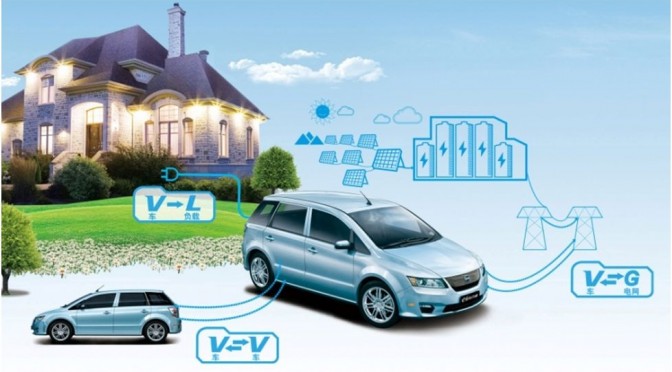“Energy storage batteries could be placed just before the end users — say 24 houses — and go on the grid during localized blackouts, peak (electric) usage and as a reserve for the grid,” said Neubauer, senior engineer for National Renewable Energy Laboratory of Golden, Colo. which is researching second-use capabilities for used lithium-ion car batteries like those going into the Chevy Volt.
The lithium-ion electric car batteries being built in West Michigan may someday be used here as power storage batteries for electric consumers and power generating companies.
That was one of the potential “second life” uses for high-storage capacity lithium-ion batteries offered by renewable energy expert Jeremy Neubauer at a business meeting Tuesday at the Haworth Inn Conference Center in Holland.
Calling it “Community Storage” of energy, he said two lithium-ion batteries could make up a residential storage station for two dozen homes that would be able to put power back on during outages and download stored electricity during peak periods.
He said any electric power company from the Holland Board of Public Works to Consumers Energy could use the energy storage system to save money and reduce the peaks and valleys of supply and demand.
“Right now, we only have the capacity to store 2 percent of energy of peak periods and that’s all in hydro (electricity),” said Neubauer, noting the U.S. electric power industry is strictly a supply-on-demand market with no storage capacity.
“The electricity market has to sell everything it produces when it is produced. The market today does not fully value the product of energy storage.”
But that’s starting to change through government regulation and start-up business innovation.
Solarcity and Tesla, two California companies, are working together to create a 500-kilowatt energy storage facility for residential consumers. It is a step toward meeting a 2010 California regulation that requires 5 percent of peak demand power be available from storage by 2020.
The online magazine Greentechmedia.com forecasts the two companies are really shooting to create a 10-megawatt hours system and selling the power storage reserve to companies like Southern California Edison to meet the state requirement. The two companies are using lithium-ion batteries and eyeing state and federal incentives to create the system.
Lithium-ion batteries are best suited for second-life usage for power storage over other types of batteries because when their useful life for electric vehicles is over they still retain 80 percent storage capacity for years.
“Lithium-ion batteries can also be used for bulk storage and distribution storage through the grid,” Neubauer said.
The problems for creating power storage sites for national use are a complex system of regulations and requirements in place for today’s electricity production and distribution plus myriad different power systems that would have to be coordinated.
Neubauer was invited to speak in Holland by Hope College, and Michigan’s Smartcoast, part of the economic development group Lakeshore Advantage. The city has two companies making lithium-ion batteries: Johnson Controls and LG Chem.

